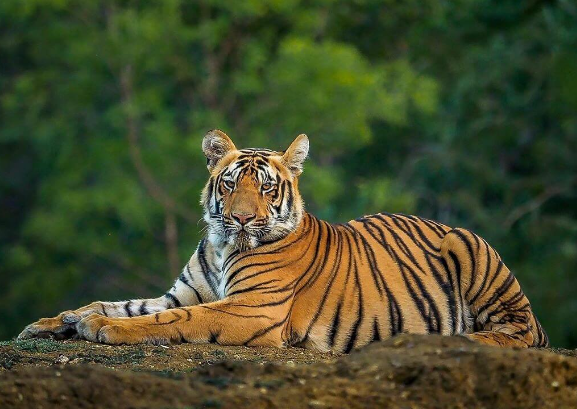Bengal Tigers: Majestic Guardians of India’s Wildlife
Bengal tigers are not just a national symbol for India; they embody the rich cultural heritage and biodiversity of the subcontinent. This iconic species represents both the beauty of nature and the urgent need for wildlife conservation efforts. Understanding more about these magnificent creatures can inspire us to take action in protecting their future.
Conservation Status and Efforts
The Bengal tiger is classified as endangered, primarily due to habitat loss, poaching, and human-wildlife conflict. India is home to over 70% of the world’s wild tiger population, and conservation efforts have increased significantly over the past few decades. Initiatives such as Project Tiger, launched in 1973, have focused on creating protected areas and wildlife reserves. As a result, the Bengal tiger population has shown signs of recovery, with an estimated count of around 2,226 in the latest census. These positive strides highlight the importance of ongoing commitment and community involvement in conservation.
Habitat and Behavior
Bengal tigers thrive in diverse habitats, from tropical rainforests to grasslands and mangroves. Their adaptability is a key factor in their survival, allowing them to hunt various prey, including deer, wild boar, and smaller mammals. Known for their solitary nature, tigers are generally nocturnal hunters, using stealth and strength to capture their food. They can cover vast distances, marking their territory with scent markings and vocalizations to communicate with other tigers. Understanding their behavior and habitat needs is crucial for effective conservation strategies.
Cultural Significance and Impact
Beyond their ecological role, Bengal tigers have a profound impact on Indian culture and mythology. They are often depicted in art, literature, and folklore, symbolizing strength, power, and grace. Many indigenous communities have spiritual connections with these majestic animals, fostering a sense of reverence and protection. The presence of Bengal tigers in ecosystems also has a cascading effect—conserving them supports other wildlife and plants, maintaining biodiversity. Promoting awareness and appreciation of their cultural significance can further bolster conservation efforts and inspire responsible tourism.
In conclusion, Bengal tigers are vital to India’s ecological and cultural fabric. By learning more about these incredible creatures, we can each play a part in their preservation. Consider exploring local wildlife reserves, supporting conservation organizations, or simply sharing your knowledge. Every action counts in ensuring that future generations can marvel at the beauty of Bengal tigers in the wild.

